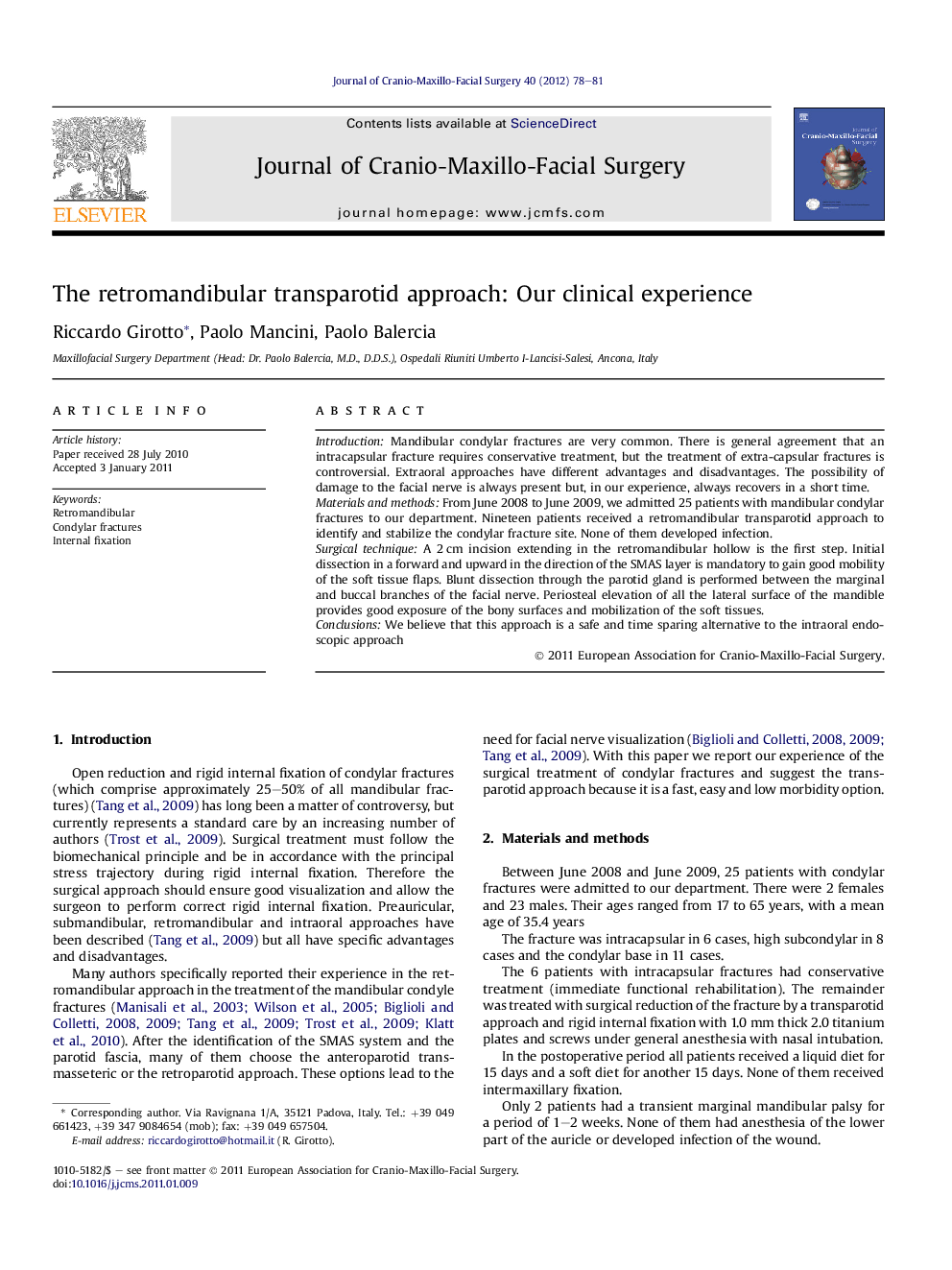| Article ID | Journal | Published Year | Pages | File Type |
|---|---|---|---|---|
| 3143660 | Journal of Cranio-Maxillofacial Surgery | 2012 | 4 Pages |
IntroductionMandibular condylar fractures are very common. There is general agreement that an intracapsular fracture requires conservative treatment, but the treatment of extra-capsular fractures is controversial. Extraoral approaches have different advantages and disadvantages. The possibility of damage to the facial nerve is always present but, in our experience, always recovers in a short time.Materials and methodsFrom June 2008 to June 2009, we admitted 25 patients with mandibular condylar fractures to our department. Nineteen patients received a retromandibular transparotid approach to identify and stabilize the condylar fracture site. None of them developed infection.Surgical techniqueA 2 cm incision extending in the retromandibular hollow is the first step. Initial dissection in a forward and upward in the direction of the SMAS layer is mandatory to gain good mobility of the soft tissue flaps. Blunt dissection through the parotid gland is performed between the marginal and buccal branches of the facial nerve. Periosteal elevation of all the lateral surface of the mandible provides good exposure of the bony surfaces and mobilization of the soft tissues.ConclusionsWe believe that this approach is a safe and time sparing alternative to the intraoral endoscopic approach
